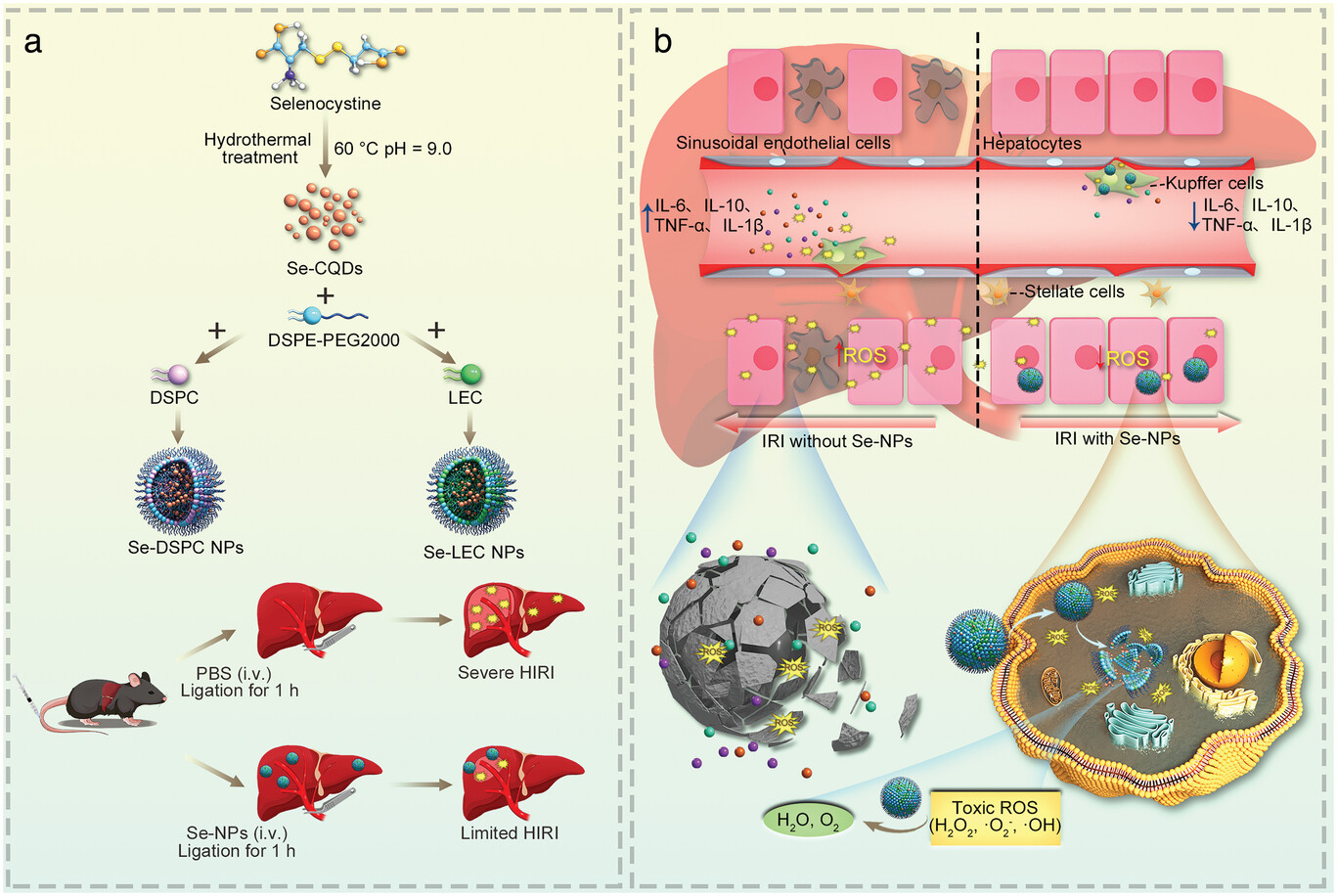Bing Bai, Shaolong Qi, Kai Yang, Xinyang Yu, Ruijun Jian, Tianfang Zhang, Daming Wang, Hongbo Meng, Yifan Zhao, Yu Xia*, Huaping Xu*, Guocan Yu*, Zuobing Chen*
Small; 2023, 19, 2300217.
Hepatic ischemia-reperfusion injury (HIRI) is a critical complication after liver surgery that negatively affects surgical outcomes of patients with the end-stage liver-related disease. Reactive oxygen species (ROS) are responsible for the development of ischemia-reperfusion injury and eventually lead to hepatic dysfunction. Selenium-doped carbon quantum dots (Se-CQDs) with an excellent redox-responsive property can effectively scavenge ROS and protect cells from oxidation. However, the accumulation of Se-CQDs in the liver is extremely low. To address this concern, the fabrication of Se-CQDs-lecithin nanoparticles (Se-LEC NPs) is developed through self-assembly mainly driven by the noncovalent interactions. Lecithin acting as the self-assembly building block also makes a pivotal contribution to the therapeutic performance of Se-LEC NPs due to its capability to react with ROS. The fabricated Se-LEC NPs largely accumulate in the liver, effectively scavenge ROS and inhibit the release of inflammatory cytokines, thus exerting beneficial therapeutic efficacy on HIRI. This work may open a new avenue for the design of self-assembled Se-CQDs NPs for the treatment of HIRI and other ROS-related diseases.

